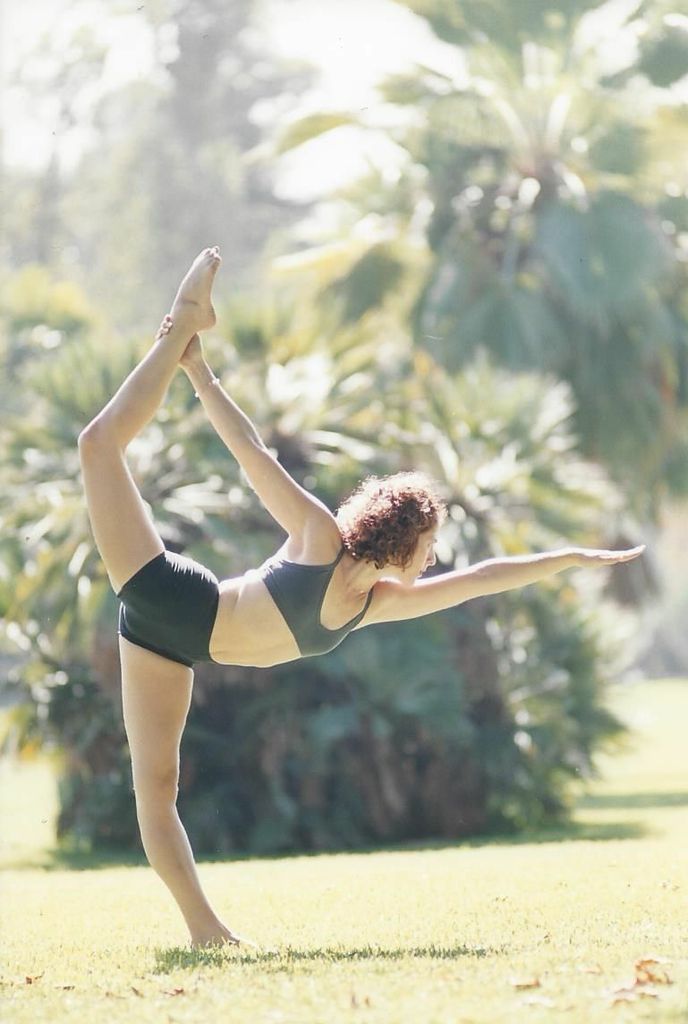I started practicing Bikram yoga in 1996 when I was 28. I came to yoga after months of pain and discomfort from arthritis in my right hip caused by a break when I was 13. At the time, I was told there was nothing I could do and that I would need a hip replacement in the next 5 years. (I know I did not have cancer, but pretty hard news for a 28-year-old right???) I refused to accept that. I loved Bikram yoga from the start, even though the heat was a bit intimidating. But after a few months of regular practice, I craved it and I started to feel better. I even stopped taking prescription anti-inflammatories, I experienced less pain and my limp went away. (I also stopped feeling so sorry for myself and starting dating again.)
After a few month s, I got so excited by the healing of the practice that I started pushing the limits of my body and I tried too hard. I started forcing a range of motion that my body did not feel comfortable with. When I would force a pose I noticed I was usually holding my breath or at best I was grunting while trying to complete it. I thought that if I pushed my body to complete a hard pose it would fix my issues. Instead it usually caused inflammation in my back or hip the next day and I would feel stiff after class instead of revitalized.
s, I got so excited by the healing of the practice that I started pushing the limits of my body and I tried too hard. I started forcing a range of motion that my body did not feel comfortable with. When I would force a pose I noticed I was usually holding my breath or at best I was grunting while trying to complete it. I thought that if I pushed my body to complete a hard pose it would fix my issues. Instead it usually caused inflammation in my back or hip the next day and I would feel stiff after class instead of revitalized.
I realized that I had to balance the effort of my postures with the ease of normal breathing to get the maximum out of my practice and not cause injury or inflammation. I also realized that when I kept my breath calm and continued to breathe normally I was more deeply connected to my body. Then I was able to access and find new muscles to activate during a posture and find muscles to relax. I found more depth in my practice while building more strength with less pain. (This was pretty cool to discover and expand to the fun stuff like headstands and handstands.)
Finding a balance between effort in my postures and ease in my breathing was a huge revelation. I continued to build on my theory with each posture and search for the balance where I focused my effort and where to find the ease. I took these lessons and started incorporating them into my teaching at my yoga studio. My students also found these revelations life changing. People don’t realize how their bodies work against them subconsciously, especially when they have pain and fear. Sometimes that fear is just getting into a hot room to do yoga! But usually it comes from long term pain, whether it is back, knee or in my case – hip pain.
I then took this concept of balancing effort and ease in my yoga practice and expanded it into my real life. This is the foundation of my YogiVal 5 Fundamentals and the mantra on which I live my life. I plan to blog about all my experiences of balancing effort and ease into my yoga practice and teaching, family life, friend life, mommy life and marriage life. I am a storyteller, and I hope my stories will resonate with your experience and shed light on how you can make more balanced decisions to live to your full potential.
I want to introduce The YogiVal 5 Fundamentals of foundation and connection principles as a tool for balancing effort and ease in the body. I think these principles will help anyone, whether you are new to yoga, have years of experience, or sit all day at a desk and don’t like to exercise. I think anyone who wants to live or feel better in their body will benefit from these very simple and basic, yet often missed, alignment principles. I hope you will watch the intro to The YogiVal 5 Fundamentals and start a new journey of better alignment, more strength and less pain.